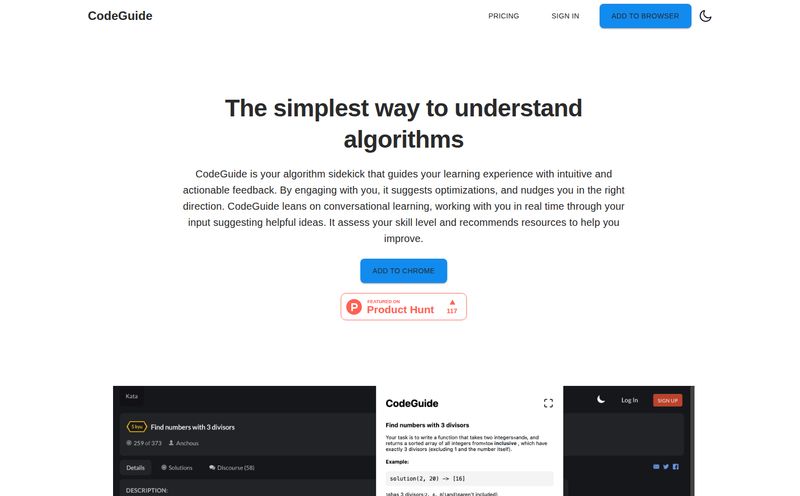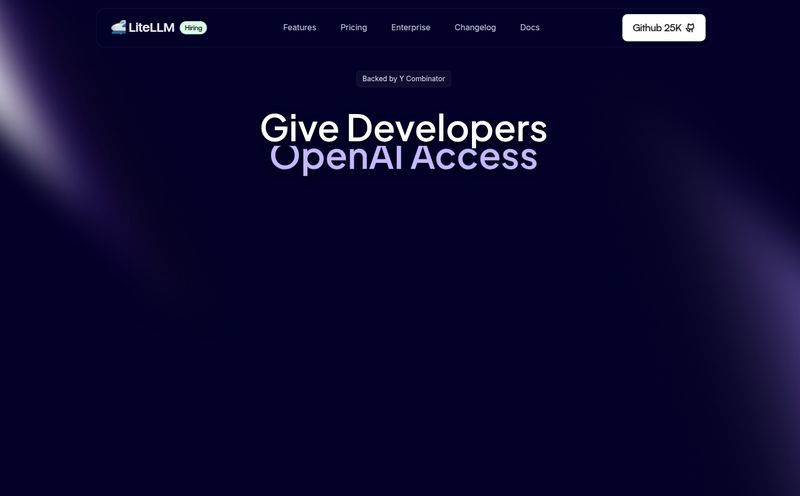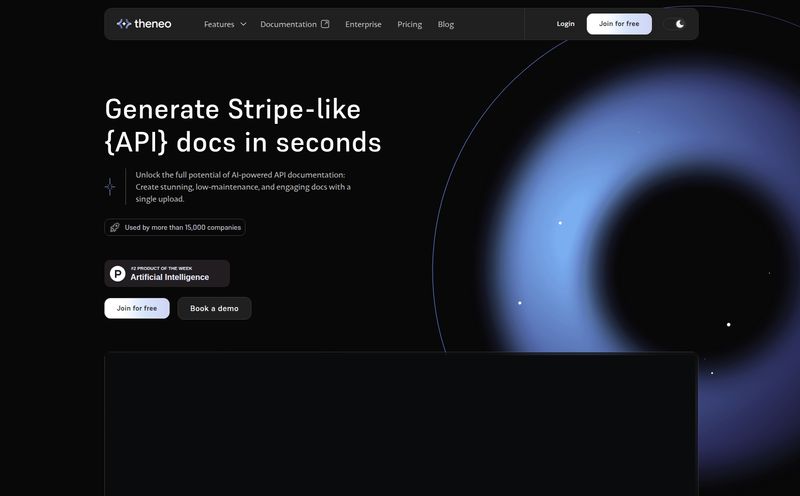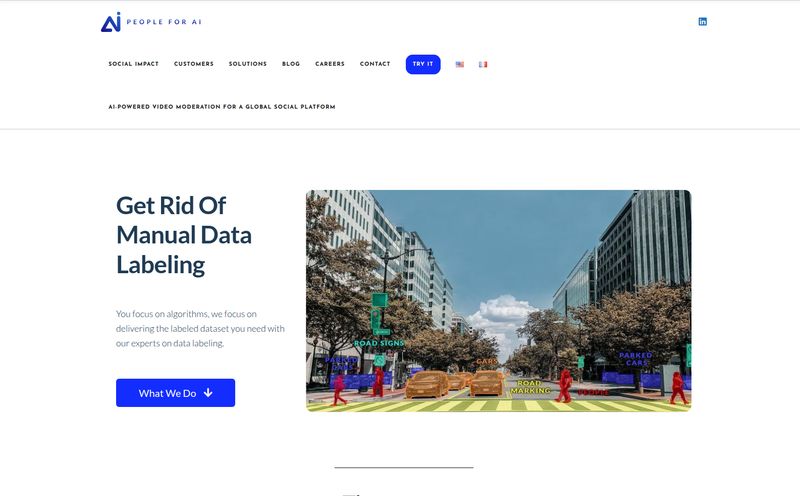How much of your life as a designer, developer, or creative have you spent agonizing over color palettes? For me, it’s probably a solid few months, all told. It’s the foundational choice that can make or break a project, and yet it feels like a dark art. You can have all the color theory knowledge in the world, but sometimes, the inspiration just doesn't strike. You end up cycling through the same old palettes on Coolors or staring blankly at Adobe’s color wheel, feeling… well, uninspired.
So, when I stumbled across a mention of a new tool called Rangeen Studio, my curiosity was piqued. The promise? An AI-driven approach to color that feels fresh. Now, if you go to their website right now, it's… sparse. Like, a ghost town. Just a name and a copyright date. And you know what? That almost makes me more interested. It feels like we're getting a sneak peek at something before it hits the mainstream.
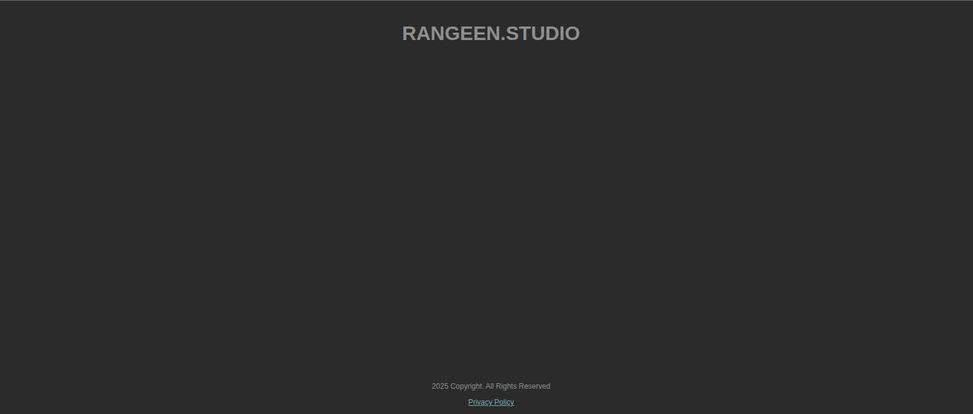
Visit Rangeen
So, What Exactly is Rangeen Studio?
From the little information I could dig up, Rangeen Studio is positioning itself as the next-gen color tool for people like us. People who build things. The official line says it's a color palette generator for artists, designers and developers. Nothing new there, right? But the magic, as always, is in the details. It isn't just another random hex code generator; it’s built around some genuinely intriguing methods of creation.
It seems to understand that inspiration isn't a linear process. Sometimes you have words, sometimes you have an image, and sometimes you just have a vibe. Rangeen seems to want to meet you wherever you are in that messy, beautiful creative process.
The Features That Actually Caught My Eye
This is where things get interesting. It’s not just a list of features; it's a new workflow they're proposing. I’m already thinking about how this could change my initial design phase.
ColorGPT - Speaking Colors into Existence
Okay, this is the headline act. A “Text To Palette” feature called ColorGPT. The concept is simple, yet kinda profound. You describe a mood, a scene, or a feeling, and the AI translates it into a color palette. Think about that for a second. Instead of fiddling with sliders, you could just type:
“A quiet, misty morning in the Pacific Northwest”
Or…
“The interior of a retro 1970s sci-fi spaceship”
This is like having a synesthetic assistant who can instantly visualize your abstract ideas. Of course, the provided info hints that it “may require experimentation.” I actually see this as a plus. It suggests it's a creative partner, not a vending machine. You have to work with it, refine your prompts, and discover things. That sounds a lot more fun than just hitting 'randomize' for teh hundredth time.
From Album Art to Artboard
This one really resonates with me. How many times have you seen a stunning album cover and thought, “I want my project to feel like that”? The “Album Art To Palette” feature seems designed for exactly this. It’s a tool for capturing a pre-existing aesthetic. Imagine building a promotional site for a musician. You could instantly pull a perfectly matched, harmonious palette directly from their latest release. It’s not just copying; it’s translating an auditory and visual mood into a usable digital asset. Genius.
Accessibility Isn't an Afterthought Here
Now, this is the part that makes me, an SEO and web professional, sit up and pay attention. Rangeen includes Colorblind Simulations. For too long, accessibility has been something tacked on at the end of a project, if at all. Building this check directly into the inspiration phase is a massive win.
You can fall in love with a palette, and then immediately check if it works for users with Protanopia, Deuteranopia, or other forms of color vision deficiency. This is huge. Designing with empathy from the very first step means better, more inclusive products for everyone. According to the Web Accessibility Initiative (WAI), creating accessible content is a fundamental part of good design, and tools like this lower the barrier to getting it right. Honestly, this feature alone is almost enough to sell me.
No More Wasting Time with Exports
Finally, a small but mighty feature: “Lightning Fast Exports.” We’ve all been there. You finally nail the perfect palette in some clunky online tool, and then you have to manually copy and paste six different hex codes, one by one. Or the export function is buried under three menus. If Rangeen can make this process truly seamless—a one-click copy for CSS variables, an instant download for ASE files—it will save a ton of cumulative time and frustration. It's a quality-of-life upgrade that shows they understand a developer's workflow.
But What About the Price? The Million-Dollar Question
Here’s the elephant in the room. There’s no pricing information available yet. Is it a one-time purchase? A subscription model like Adobe? Or could it be a freemium tool with a pro tier? I’m personally hoping for a generous free tier. That would make it an incredible resource for indie developers, students, and designers just starting out. A paid 'Pro' tier with team features, unlimited palettes, or advanced export options would seem totally fair. For now, we'll have to wait and see.
A Healthy Dose of Skepticism
Alright, let’s be real. It’s easy to get excited about shiny new toys. The website is an empty shell, and the information is limited. The ColorGPT could be gimmicky if the AI isn't properly trained. The “not fully detailed” capabilities could mean it’s still very much a work in progress. But even with that skepticism, the ideas behind Rangeen Studio are spot on. They’re targeting real pain points that every creative professional faces. They're thinking about workflow, inspiration, and inclusion all at once.
Who is Rangeen Studio Really For?
Based on its features, I see a few key people falling in love with this:
- UI/UX Designers: Who need to quickly generate and test accessible, mood-appropriate color schemes for apps and websites.
- Front-End Developers: Who want to grab a great-looking, pre-vetted color palette for a side project without spending hours in a design tool.
- Branding Specialists: Who can use the Text to Palette feature to translate a brand's core values (e.g., “dependable, organic, innovative”) into a tangible color identity.
- Digital Artists & Illustrators: Who can pull inspiration from anywhere—a song, a photo, a film—and instantly have a working palette to start painting with.
My Final Thoughts
Rangeen Studio is a bit of a mystery box right now, but I'm optimistic. It's not just another tool; it’s a new approach. By combining AI-powered text prompts, visual analysis, and built-in accessibility checks, it has the potential to become an indispensable part of my creative toolkit. It's one of those tools that feels like it was designed by someone who has actually been in the trenches.
I'll be keeping a close eye on Rangeen.studio, waiting for that sparse landing page to blossom into a full-fledged product. And I think you should too. This could be good.
Frequently Asked Questions
- What is Rangeen Studio?
- Rangeen Studio is a modern color palette generator designed for designers, developers, and artists. It uses unique methods like AI text prompts (ColorGPT) and album art analysis to help users create beautiful and accessible color schemes.
- How does the ColorGPT feature work?
- ColorGPT is a “Text To Palette” tool. You provide a descriptive text prompt, like “a warm, cozy library on a rainy day,” and the AI generates a color palette that visually represents that description. It's a way to translate abstract moods and concepts into concrete colors.
- Is Rangeen Studio free to use?
- Currently, there is no public pricing information available as the tool appears to be in a pre-launch or early development phase. We'll have to wait for the official launch to know about its pricing model, which could be free, freemium, or subscription-based.
- Why are colorblind simulations important for designers?
- Designing for accessibility ensures that your website, app, or artwork is usable and enjoyable for the widest possible audience, including those with color vision deficiencies. Simulating colorblindness helps designers choose colors with sufficient contrast, ensuring that important information is never conveyed by color alone.
- Can I use palettes from Rangeen for commercial projects?
- While not explicitly stated yet, color palette tools are generally created for this purpose. It is highly likely you will be able to use the generated palettes for commercial work, but it’s always best to check the tool's terms of service upon its full release.
- What formats can I export palettes in?
- The feature is described as “Lightning Fast Exports,” which suggests modern, developer-friendly formats. While unconfirmed, we can likely expect options like CSS variables, Hex, RGB, HSL, and possibly file formats like .ASE for use in Adobe products.
